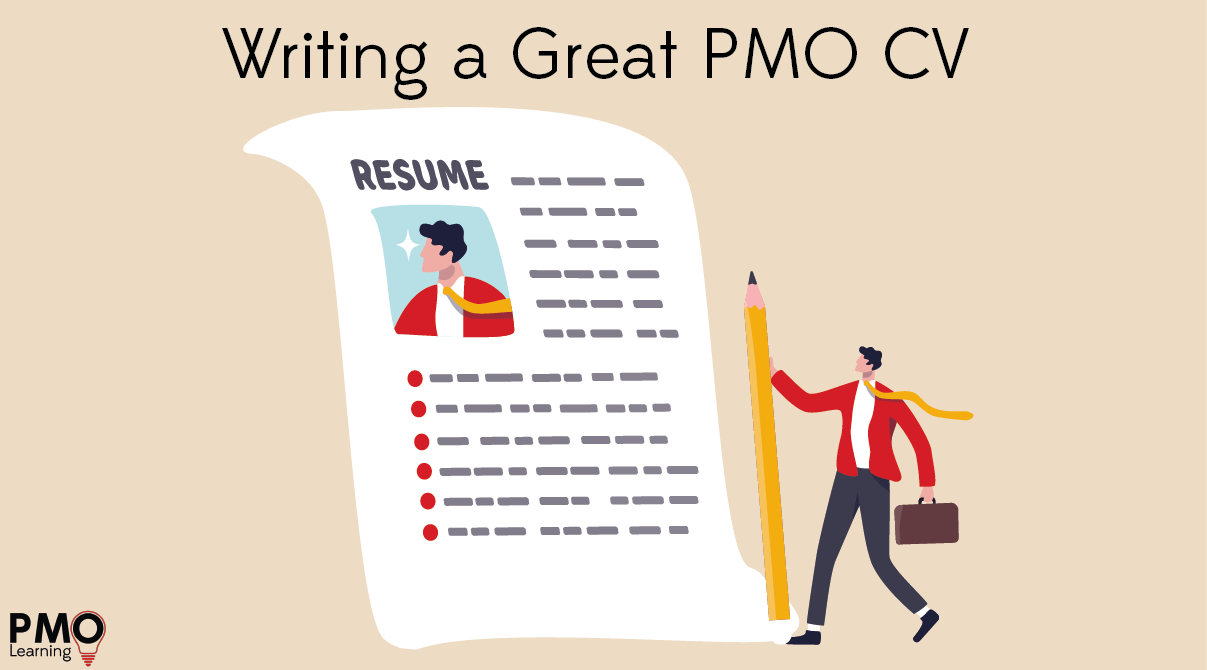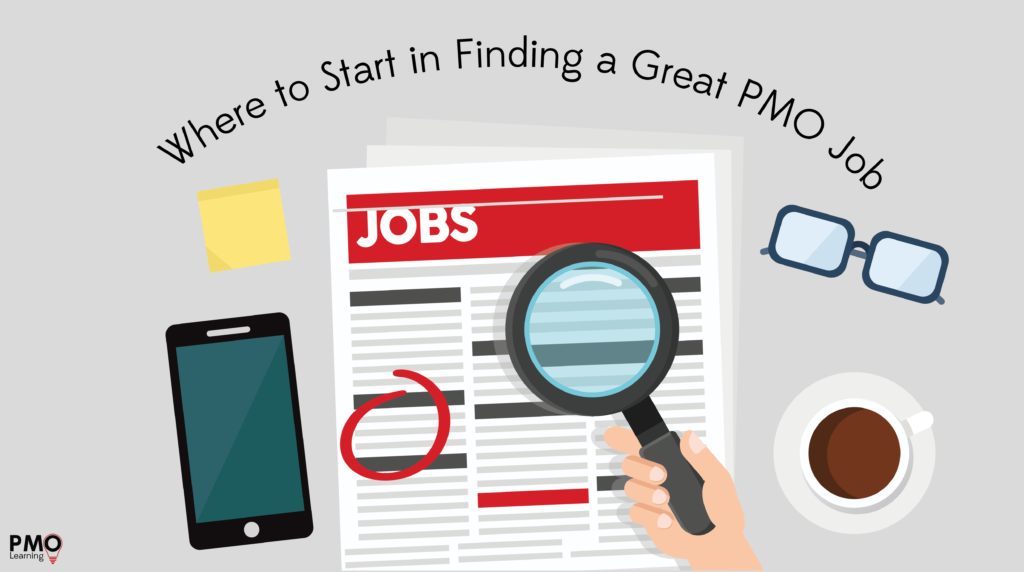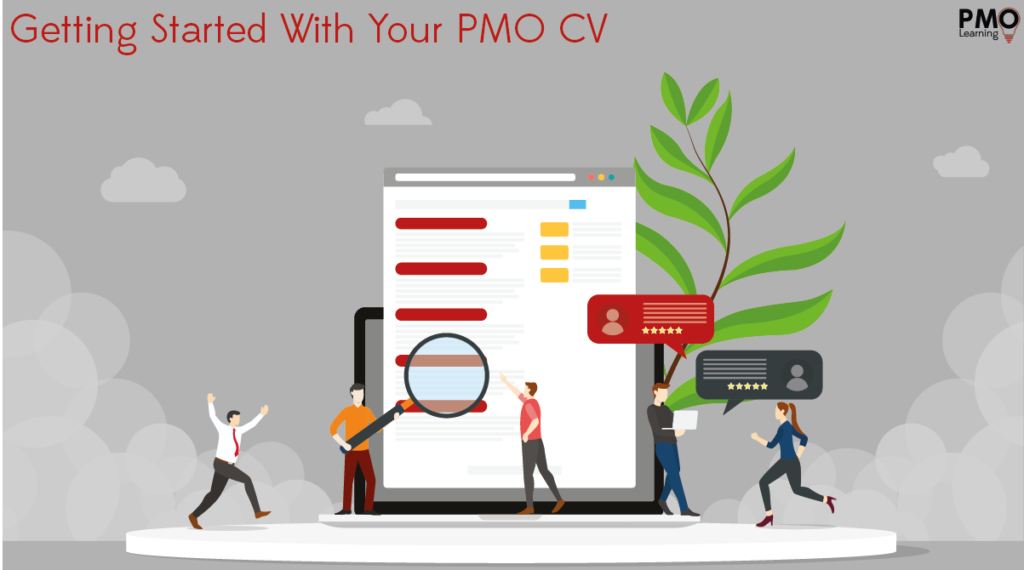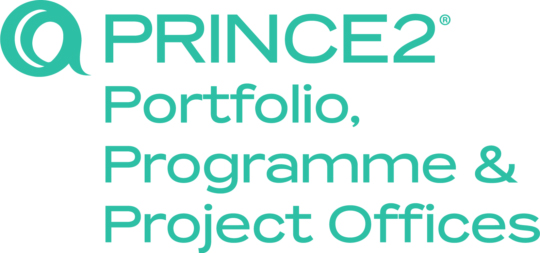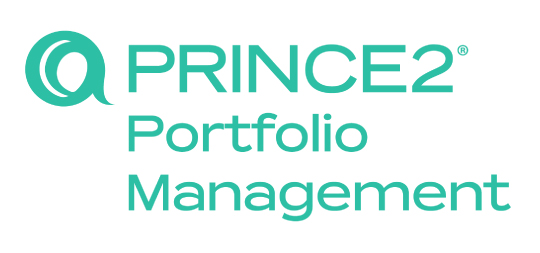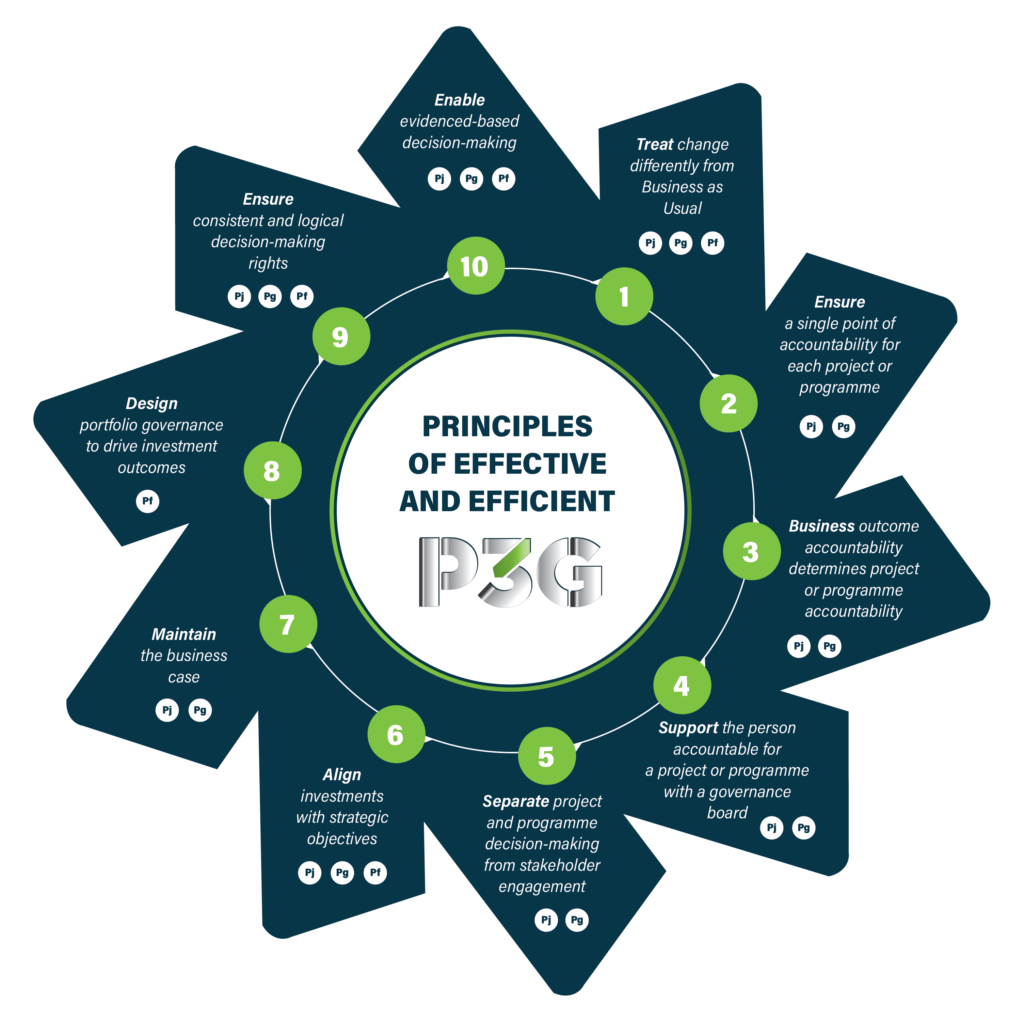We started off down a path to finding a great PMO role, so far we’ve looked at what it is you’re actually selling in the employment market and then we’ve started with the background prep we need to do before starting to write a CV.
Both of these steps are crucial if we want to find a great PMO role – without them we’ll just be making application after application without really understanding the chance we have in landing one of those roles. You’ll be scattergunning your CV all over town and getting more wound up that you’re not getting an interview.
If you’ve not already read the previous articles, now is the time. Start with this one:
And then progress onto this one:
By this point you’ll be ready to put pen to paper and actually start putting together your CV.
Writing a Great PMO CV
This statement is so true:
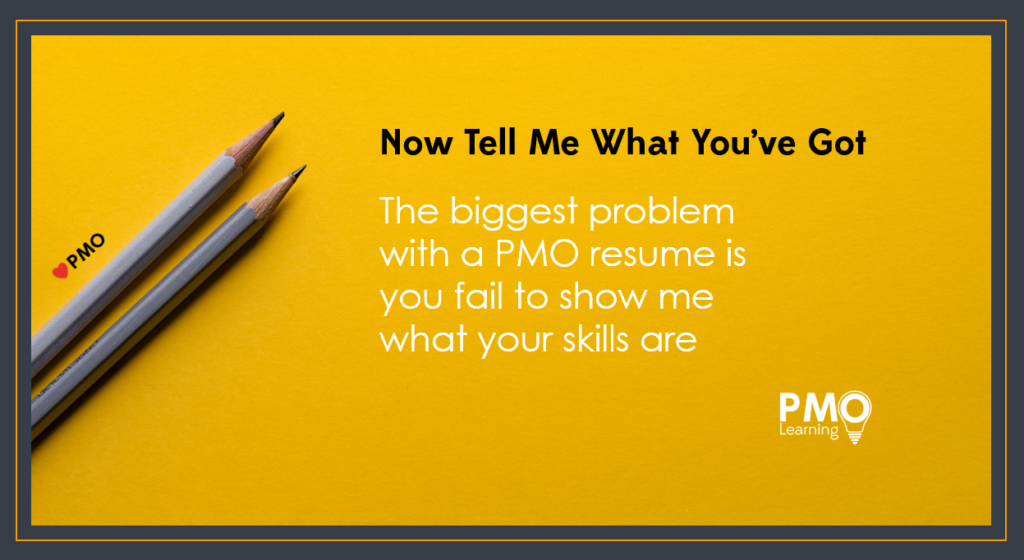
So many PMO practitioner CVs fail to deliver on the most crucial reason why a CV exists in the first place – what skills do you actually have.
Lots of CVs will show experience – where the experience has been gained for example, but many will stop short and actually highlight the skills that have been gained from the experience.
If you think about the whole recruitment process for a minute – you’re looking to move jobs, most likely you’re looking for a job in a new organisation.
Your CV will probably highlight a lot about the current organisation you’re working for and the experience you’ve gained there.
The problem is, this new organisation that is out there with that great PMO job is not that interested in learning about the organisation you worked for – they’re not even that interested in what the projects might have been that you were supporting – or even details about the PMO itself.
What they’re interested in is – what skills do you have, which means you can perform the PMO role they have.
Their projects and PMO will be likely be very different to the ones where you’ve gained your experience so it’s common sense that they will be looking for evidence of core skills on your CV.
Looking for a short course on how to write a great PMO CV? [Take a look at the course from PMO Learning]
Starting at the Beginning
 Let’s start at the top of the CV, that bit at the top, which when a CV is initially opened gets glanced at.
Let’s start at the top of the CV, that bit at the top, which when a CV is initially opened gets glanced at.
It’s not ignored – or even read fully at this point. It’s just scanned to see if the words there are in line with the job being applied for.
It’s a bit like wandering down a High Street and glancing at a shop sign or window. It’s the blink of an eye decision to wander in or not depending on what you’re interested in or shopping for.
Hirers are looking for the keywords, those words that are factual and not, what I call, ‘fluff-and-puff’, so that’s words like ‘great team player’. The ones which lots of people use regardless of what type of job they’re doing.
What we’re looking for in the profile are the words which demonstrate you’re a PMO practitioner with some qualifications, with experience in a certain sector or two and something about the type of PMO.
In short, we’re trying to get this stuff in that one or two sentence paragraph at the top of the CV:
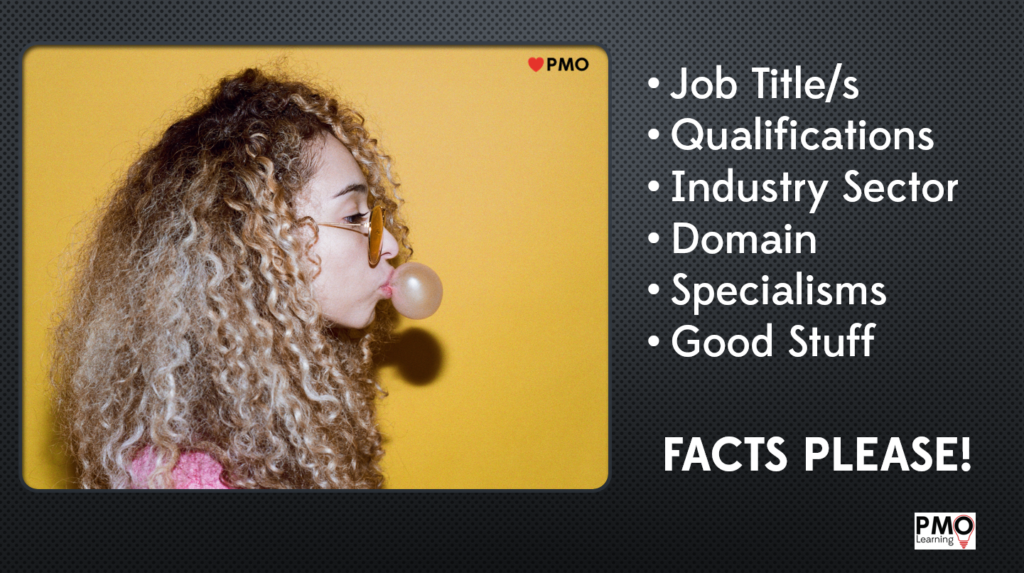
Want an example?
Of course you do, it’s one of those things where if you see how it hangs together it makes sense plus it’s always easier than starting with a blank piece of paper.
Here’s the example profile:
P3O and MoP qualified PMO Manager / PMO Lead with over fifteen years experience in financial services, business consultancy and retail sectors.
Experienced in PMO design and implementation for both programme and portfolio level PMOs. Managed over 10 PMO Analysts and Support staff. Responsible for project management delivery standards, frameworks and best practice across the organisation.
That’s it.
That’s our PMO CV shop window right there.
The Career History
 The next bit we’re going to look at is the all-important career history part.
The next bit we’re going to look at is the all-important career history part.
We’re already mentioned that it’s the skills you have that are the most important thing that a new hirer wants from you. So let’s give it to them.
When you start putting together the most recent job you’ve had, remember the 80:20 rule. You’re going to be spending most of your effect and wordcrafting on this role. It’s the most important. It’s the one that is visible straightaway on the first page, so you’re really going to do a job on this one.
First up, make the dates and company name where you’ve been working clear. On one line, nice and bold.
Then job title. Seperate line, again nice and bold. If you’ve got a weird internal job title, keep it on the CV but add a more marketplace friendly equivalent after it in brackets:
Change Support Analyst (PMO Analyst)
Next up, one line on what the company does and where you work within the company. Don’t assume that everyone knows what your company does even if its a big household name. Sure you might work for Amazon, but where in Amazon, it’s a big place, lots of different departments.
What we’re looking for here is context. It matters when a hirer is reading the CV and they’re trying to build a mental picture of where your skills and experience have come from.
Next, one line explaining why you were hired, what was the objective of your role. So for example, ‘hired to support the IT departments portfolio of programmes and projects, working with the central PMO’. Again context and mental picture building really helps a hirer when they’ve going to read what comes next.
Writing About Your Skills on a PMO CV
What we want to see on the roles and responsibilities part of the career history are PMO functions and services you’ve gained skills and competencies in.
If you’re unsure about PMO functions and services, take a look at Appendix F of the P3O manual. It will become your friend for your entire PMO life.
It is these areas of a PMO practitioner’s experience that hirers are the most interested in. The common themes across all PMOs.
For example, take the function, planning. The service may be updating and maintaining project plans. The skills include understanding and applying scheduling best practice or the ability to use Gantt charts or PPM software.
For a PMO CV, it almost becomes irrelevant what the project you’re supporting is all about. It’s all about the functions and services experience and skills gained around project, programme and portfolio management best practice.
A Quick Word About PMO Managers
The same advice about functions and services still exists plus you have to include PMO management activities too – so that’s things like setting up the PMO; managing the on-going improvements; managing a team, that kind of stuff.
It helps in applications if you give some indication of the level of seniority of your position too. So if you’re managing a team, state how many people report to you. If its a PMO at board level, put that in the CV clearly.
Then There Are Achievements
The final part is all about achievements.
This bit is tricky because we’re not looking for stuff which you’ve done as a matter of course in your job, it’s about the outstanding things you’ve done, where you’ve gone over and above what’s required. If you can find one stand out achievement, that’s enough to add to your career history.
Achievements are also related to business outcomes, so for example, your achievement should have made a difference to the business in some way. Increased revenue, reduced costs, increase capability, minimise disruption – those kinds of things come with a great story for when you’re finally in the interview chair.
So here are the highlights from the career history again:
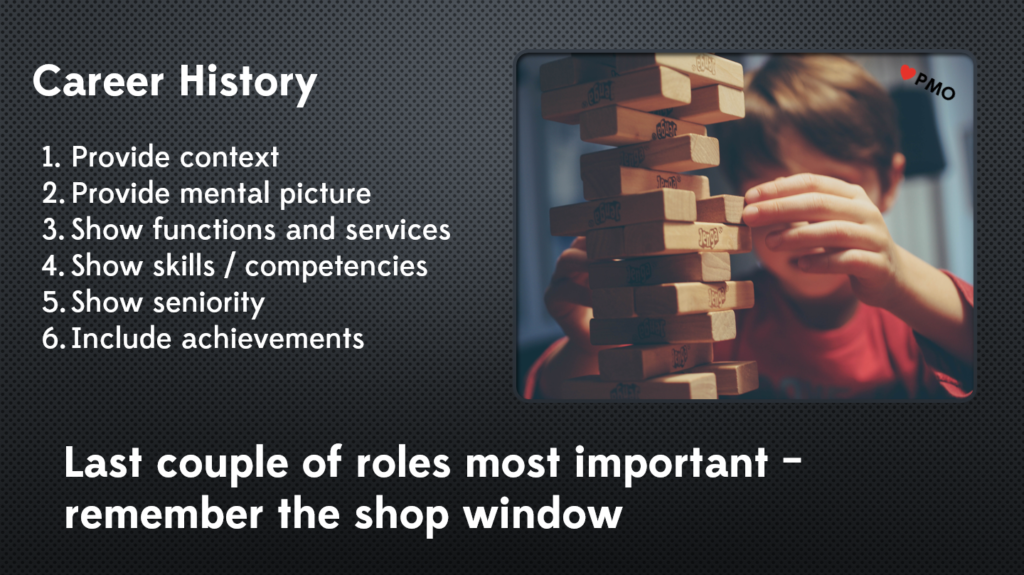
To find out more about training and development in PMO – take a look at PMO Learning full schedule of courses.
If you’re struggling with your own PMO CV, why not take a look at the CV Development course from PMO Learning – you can get started on that right away.
Try out the short two-week distance learning course from PMO Learning on how to write your own PMO CV
Enjoying Our Blog?
Sign up and receive all our articles (we’ll send you an update once a week!) plus special offers and events:
